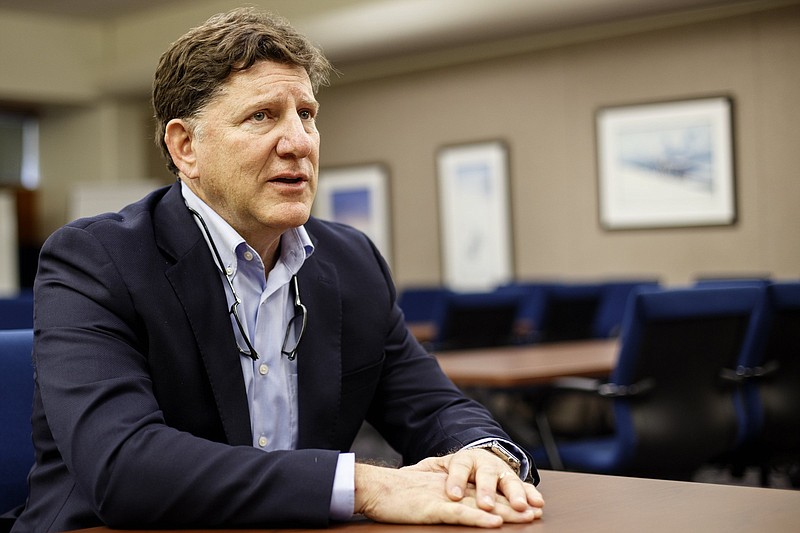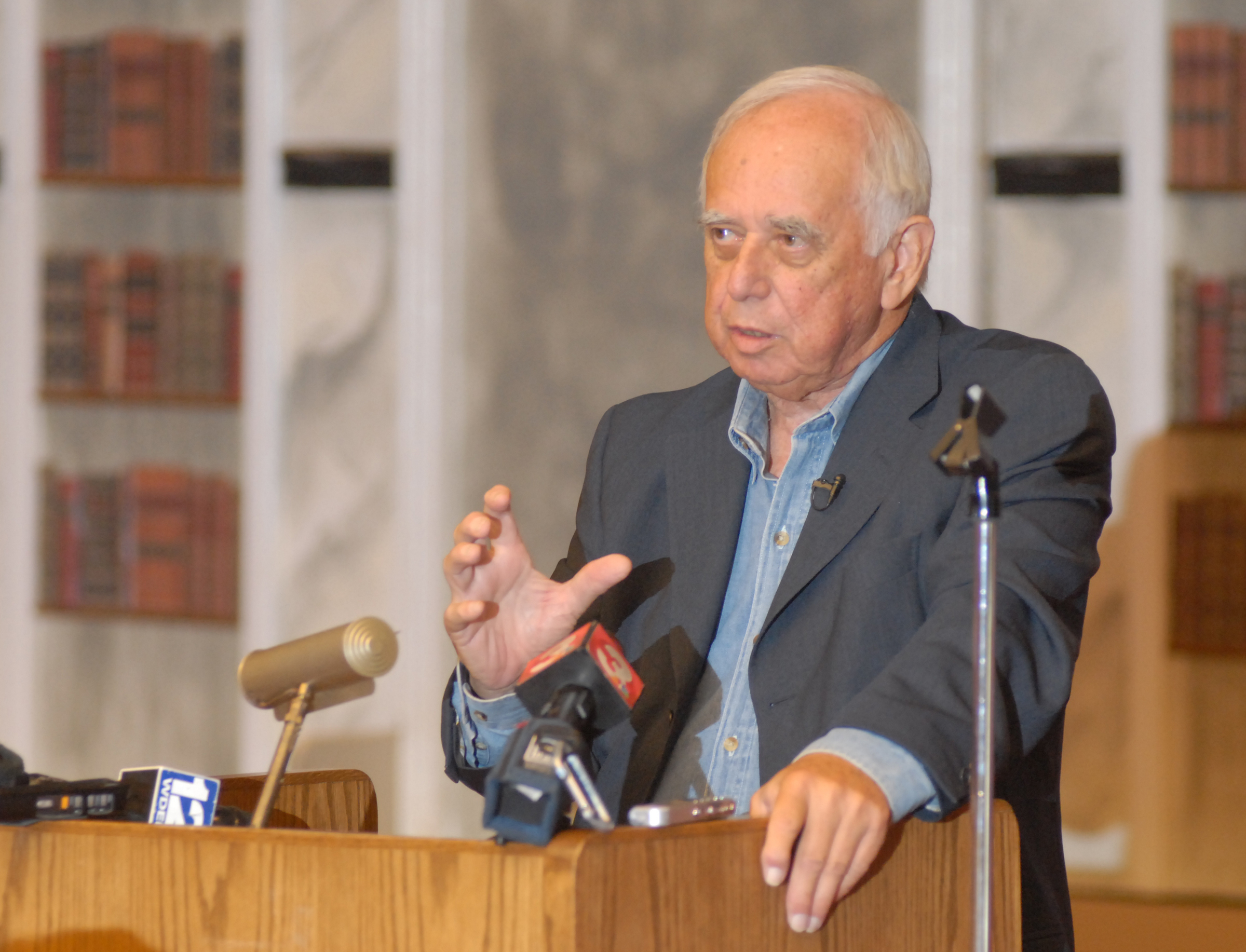Four months after the Tennessee Valley Authority adopted a budget plan to help reverse rising electricity prices, the head of America's biggest government utility says he is even more confident that electricity prices will remain stable over the next decade.
Despite a new study suggesting TVA may have to raise its rates by as much as 36% over the next 15 years because of higher costs for coal ash, fuel and other expenses, TVA President Jeff Lyash said he believes the most likely scenario is for TVA to avoid electricity rate increases through 2028.
While Georgia Power Co. and other utilities are raising electric rates this year, TVA directors voted in August to keep base rates unchanged and offered a 3.1% rebate to local power companies that sign long-term contracts with TVA. Among the 154 local power companies that buy TVA power, 134 have signed the 20-year agreements and are now getting cheaper power from TVA than they did a year ago.
"You build confidence over time by taking the right sets of action," Lyash said during a leadership meeting with his top executives this week in Chattanooga. "The capital investments we've made over the past six years have lowered our fuel costs and positioned us well for the future."
TVA's delivered cost of power, combining TVA's fixed rates and fuel costs, is 1% lower today than in 2013, TVA Chief Financial Officer John Thomas said. By comparison, the retail electric rates of the 17 peer utilities of TVA in the Southeast rose an average of 10% in the same period.
Thomas said he expects additional efficiency and technologies will help TVA offset other cost increases anticipated over the next decade, including the anticipated $2.4 billion to complete the coal ash cleanup of TVA's fossil plants, along with ongoing costs for servicing TVA's debt, pension and decommissioning funds.
TVA has benefited from cheaper natural gas and coal, but most of the $1 billion-a-year drop in fuel costs at TVA stems from the utility's additional nuclear and hydro capacity, which generates power with only a fraction of the fuel costs of coal- or gas-fired production.
"We spent about $4 billion on fuel in 2013, but we cut that to about $3 billion this year, and it will be down to $2.8 billion next year with the full power upgrades at the Browns Ferry plant," Thomas said.
By 2023, when TVA activates a new $300 million power operations center in the unincorporated area of Georgetown, Tennessee, Lyash said the utility could save another $200 million a year - including $120 million in fuel and purchased power costs - through new technologies that will improve how and where TVA power is produced and dispatched.
"Our instrumentation, controls and artificial intelligence will significantly improve our effectiveness in dispatching the fleet," Lyash said.
TVA officials insist such cost savings will offset inflationary pressures and the most likely scenarios for higher costs for coal cleanup and other regulatory issues in the next 10 years.
But a new study by Synapse Energy Economics done for the Friends of the Earth said TVA power rates could be pushed higher by a variety of causes, including higher fuel costs, new regulations for coal ash, carbon emissions or nuclear reactors, and the potential loss of load due to energy efficiency and customer defections.
S. David Freeman, a former TVA chairman who is now a consultant for Friends of the Earth, said Tuesday the Synapse study shows the potential for higher wholesale rates by TVA for local power companies such as Memphis Light Gas and Water (MLGW), which is considering splitting from TVA. Freeman said Memphis has ready access to cheaper wind power generation that could be transmitted to MLGW from wind farms in Oklahoma and Texas while Memphis and other areas could build more solar generation at less cost than what MLGW now pays TVA for power.
While TVA rates are lower than 70% of the country, power bills often remain a burden. In fact, a 2016 study by the American Council Energy Efficient Economy found that Memphis had the highest energy burden for low-income households of any major city in the country because so many homes are poorly insulated and energy inefficient.
"Memphis could go across the [Mississippi] River and get some of the best solar, wind and storage in the country and become completely carbon free in the future," Freeman said. "TVA may be nearly 60% carbon free in the future, but they are still subject to higher fuel prices and could be subject to a carbon tax."
Freeman, a 93-year-old engineer and attorney who helped design part of the Kingston Fossil Plant in the 1950s, said TVA's fleet of coal plants are more than 40 years old "and all of this coal ash has accumulated, but the trash man has never come to take it away."
If a Democrat is elected president next year and pursues a more aggressive environmental policy to clean up fossil plants, Freeman said the $2.4 billion TVA has allocated for coal ash remediation "could easily more than double."
But Lyash said TVA has already spent more than $1 billion on coal ash remediation and is converting all of its remaining coal ash ponds to dry storage. TVA also is developing plans to permanently cap or remove the remaining coal ash around its fossil plants.
"We're going beyond the regulations today to do those things that we think are appropriate," Lyash said.
If Congress adopts a carbon tax or if coal ash is required to be dug up and removed from coal plants, neighboring utilities will face much higher costs than TVA.
Last year, 56% of TVA's electricity was generated by non-carbon sources, primarily from TVA's seven operating nuclear reactors and 29 power-generating dams. With power upgrades at Browns Ferry and additional purchases of solar and wind generation, TVA expects to get 60% of its power from non-carbon sources next year.
The U.S. Energy Information Administration estimates that U.S. utilities this year will generate 37% of their electricity from natural gas and 25% from coal, leaving less than 38% of power generation nationwide from non-carbon sources.
"Relatively speaking, TVA is much better positioned for the future," Lyash said.
After paying down TVA's debt to the lowest point in 25 years, TVA's balance sheet - combined with its non-profit status as a government-owned utility - gives TVA greater financial strength to maintain stable rates, Lyash said.
Contact Dave Flessner at dflessner@timesfreepress.com or at 423-757-6340.

